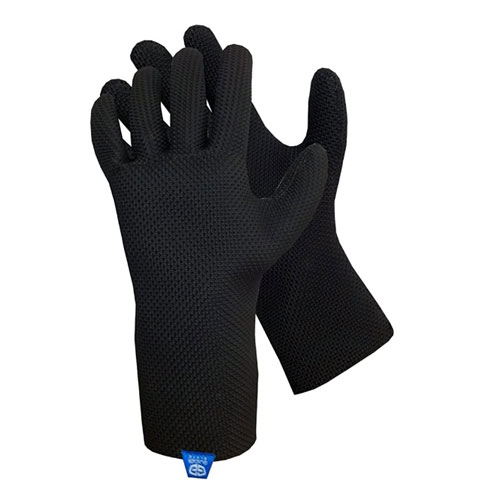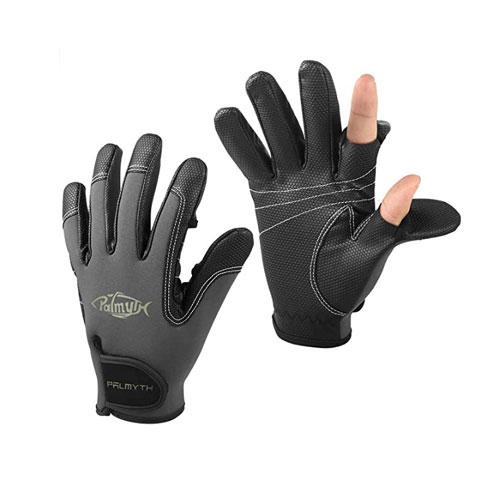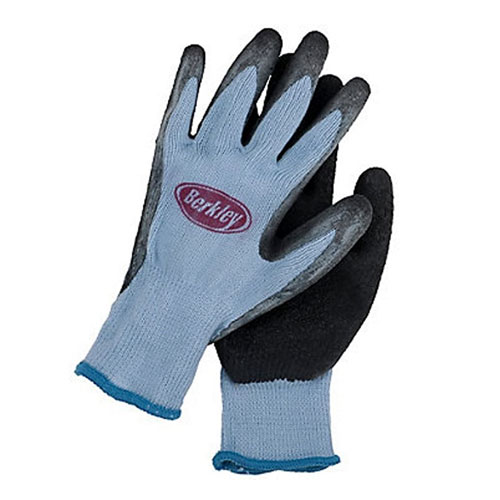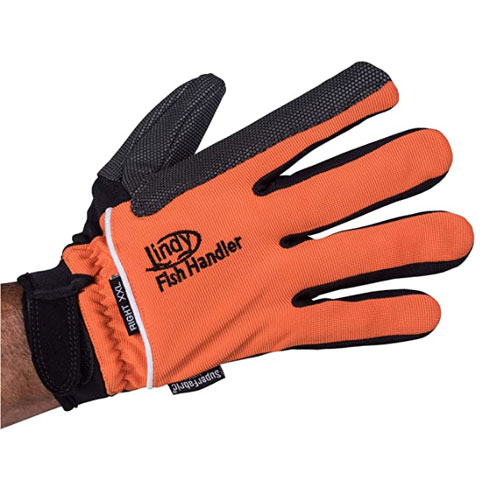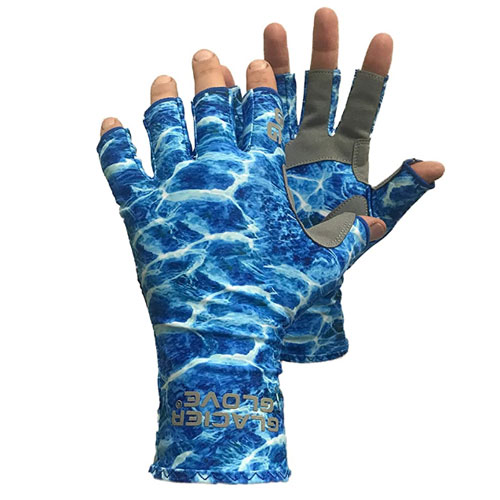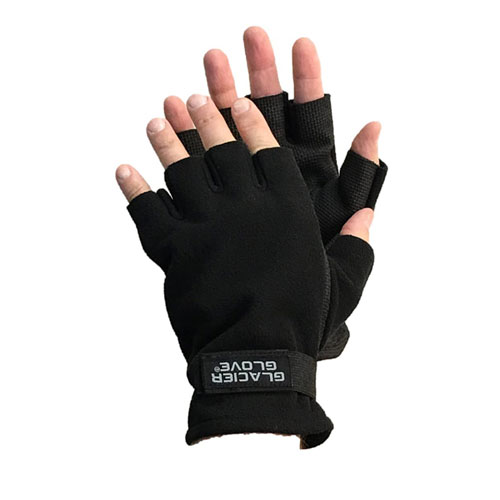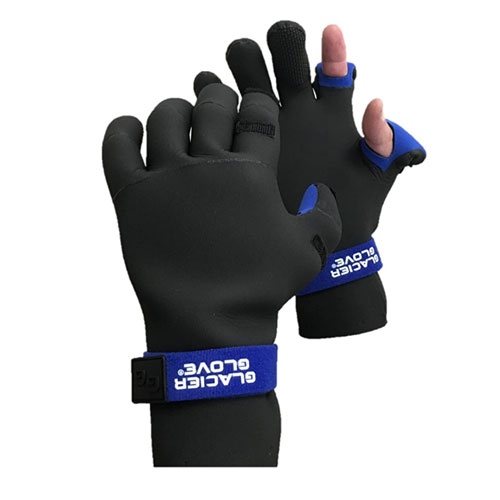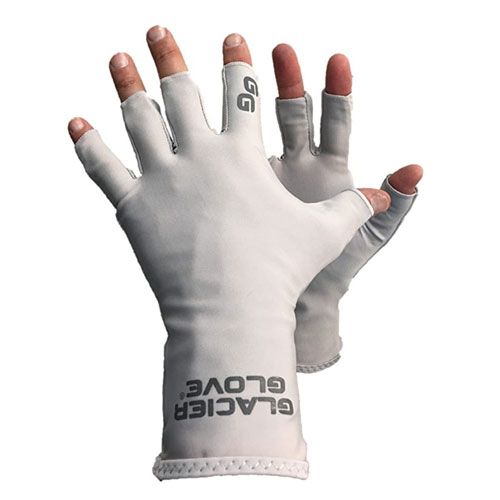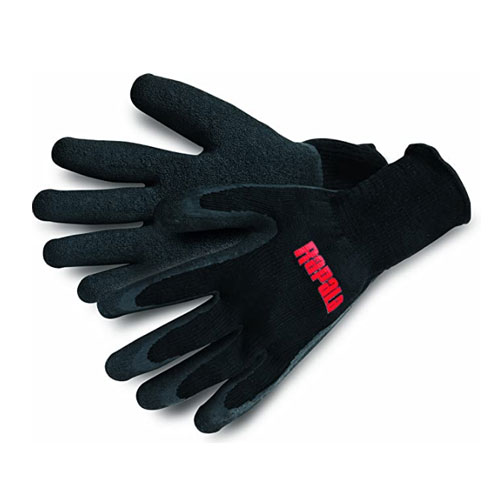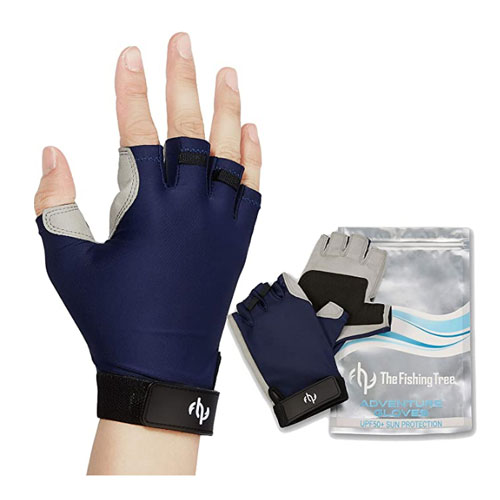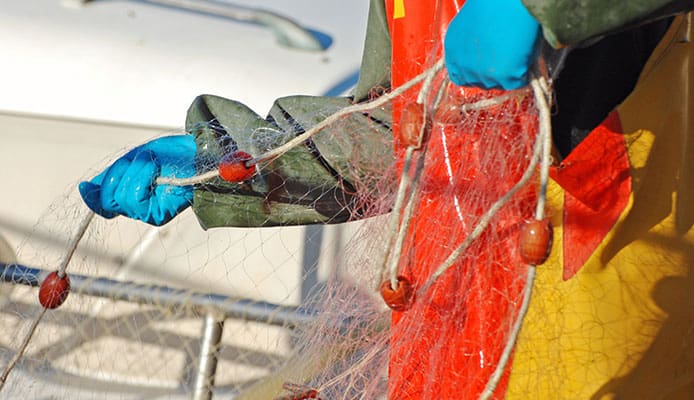
Regardless of the weather conditions, a pair of fishing gloves goes a long way when it comes to hand protection. High-quality gloves can prevent cuts, punctures, blisters, and calluses, as well as provide additional warmth and UV protection. In addition to the protective shell, the best gloves for fishing also feature non-slip palms so you can firmly grab the fish without worrying about its teeth, gill plates, or scales.
When choosing a fishing glove, you need to make sure that it fits your hand well, allows you to move your fingers freely, and protects your hands from nasty injuries. To help you do this, our fishing gloves reviews will present the best fishing gloves that you can currently buy. Additionally, we will also discuss all the features in detail so you can easily figure out what works best for your fishing style.
OUR TOP PICK
Glacier Glove Ice Bay
- Stand Out Features - Why We Love It
- Thick neoprene shell ensures that your hands stay dry inside
- Lined with 2mm fleece for additional warmth in cold weather
- Sharkskin palm texture makes the grip firm and secure
- Glued and blind-stitched seams improve the wearing comfort
- Great choice for ice fishing and harsh conditions on the water
Best For: Cold Weather
Finger Length: Full
Material: Neoprene
Lining: Fleece
Palm: Sharkskin
Waterproof: Yes
EDITORS CHOICE
Palmyth Neoprene
- Stand Out Features - Why We Love It
- Thumb and index fingers come with easily removable tops
- Adjustable wrist with Velcro closure to keep cold air out
- Stretch neoprene shell provides protection and comfort
- Generous fleece backing greatly improves the insulation
- Pre-curved fingers make the gloves feel more natural
Best For: Dexterity
Finger Length: Full (Modular Thumb and Index)
Material: Neoprene
Lining: Fleece
Palm: Artificial Leather
Waterproof: No (Water-Resistant)
BEST VALUE
Berkley Textured
- Stand Out Features - Why We Love It
- Rubber-coated palm ensures that you have a firm grip
- Full-length fingers give you additional finger protection
- Heavy-duty polyester shell resists knives, tears, and abrasion
- Textured grip prevents slippery fish from sliding out
- Additional coating improves the durability of the glove
Best For: Slippery Fish
Finger Length: Full
Material: Polyester
Lining: None
Palm: Rubber
Waterproof: No
Lindy Puncture-Proof
- Stand Out Features - Why We Love It
- SuperFabric material protects against punctures
- Available in three sizes so everyone can find the right fit
- Textured rubber palm makes sure the fish stays in your hand
- Easily-adjustable wrist with Velcro closure keeps the wind out
- Resistant to chemicals and oil (can be used as a working glove)
Best For: Puncture Protection
Finger Length: Full
Material: SuperFabric (Synthetics)
Lining: None
Palm: Rubberized
Waterproof: No
Glacier Glove Islamorada Sun
- Stand Out Features - Why We Love It
- Exceptional protection from sun damage (UPF 50+)
- Synthetic leather palm makes the grip firm and secure
- Lycra shell is easy to wash and dries incredibly fast
- Form-fitted design improves dexterity and finger movement
- Ideal balance of protection and comfort for warm weather fishing
Best For: Sun Protection
Finger Length: Half
Material: 85% Lycra, 15% Synthetic Leather
Lining: None
Palm: Synthetic Leather
Waterproof: No
Glacier Glove Alaska River Series Fingerless
- Stand Out Features - Why We Love It
- Lined with soft fleece to improve warmth and comfort
- Sharkskin palm texture prevents fish from slipping
- Elastic wrist design with adjustable Velcro closure
- Excellent protection against wind and cold air
- Fingerless design improves dexterity while using
Best For: Moderate Weather
Finger Length: Half
Material: Neoprene, Fleece
Lining: Fleece
Palm: SharkSkin
Waterproof: No
Glacier Glove Pro Angler
- Stand Out Features - Why We Love It
- Slit top on thumb and index fingers makes the glove more versatile
- Glued seams with blind stitching prevent chafing and discomfort
- Pre-curved fingers give you a natural feel when wearing
- Sharkskin texture palm provides an improved better grip
- Excellent for ice fishing and hunting in low temperatures
Best For: Professional Anglers
Finger Length: Full (Modular Thumb and Ring Finger)
Material: Neoprene
Lining: Fleece
Palm: SharkSkin
Waterproof: No (Water-Resistant)
Glacier Glove Abaco Bay Sun
- Stand Out Features - Why We Love It
- Lightweight lycra shell feels fantastic on the hand
- Four-way stretch construction prevents skin irritation
- Fingerless design makes using flies and rods easier
- Long Velcro wrist provides additional UV protection
- One of the easiest gloves to wash and dry
Best For: Lightweight Protection
Finger Length: Half
Material: Lycra
Lining: None
Palm: Lycra
Waterproof: No
Rapala Marine Fisherman
- Stand Out Features - Why We Love It
- Latex coating improves the glove durability
- Equally good for both fresh and saltwater use
- Blend of cotton and polyester for top-level comfort
- Floats if dropped in the water so you don’t lose it
- Quick-drying and safe for machine washing
Best For: Saltwater Use
Finger Length: Full
Material: Cotton/Polyester with Latex Coating
Lining: Polyester
Palm: Rubber
Waterproof: Yes
- Stand Out Features - Why We Love It
- Great protection against small cuts and blisters
- Adjustable Velcro wrists provide a perfect fit
- Polyester fabric with excellent sun protection (50+ UPF)
- Faux-leather palm improves strength and firmness
- Versatile glove design allows you to use it for many sports
Best For: Wearing Comfort
Finger Length: Half
Material: Polyester
Lining: None
Palm: Faux Leather
Waterproof: No
How To Choose Fishing Gloves – Buying Guide
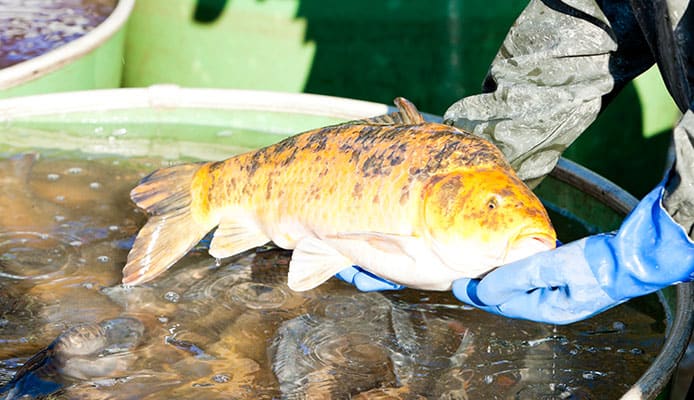
Style
When looking for the best fishing gloves, you first need to figure out which glove style you need. Three options are available – full-finger, half-finger, and split-finger glove.
Full Glove: This type has the entire finger length covered. It provides a higher level of warmth and protection, but the dexterity is reduced.
Half-Finger (Fingerless) Glove: Great for work that requires accuracy (changing lures, tying knots, using a phone) but provides less protection.
Split-Finger Glove: This type tries to get the best out of both types – the fingers are fully covered but thumbs and indexes have caps that you can remove when you need more dexterity.
Material
The material used to make your gloves is perhaps the most important factor when it comes to their performance. For optimal performance, fishing gloves are usually made from nylon (strongest), polyester (lightest), or neoprene (best water protection). On the other hand, the palm design often includes rubber or faux leather to improve the grip.
Thickness
While you might think that a thicker material automatically means a better glove, this isn’t always the case. A thick layer will certainly give you a higher level of protection, but it will greatly reduce dexterity. Because of this, it’s better to go for a higher-quality material that will provide the same protection in a thinner and more flexible layer.
Grip
Besides protecting your hands, a good pair of fishing gloves also needs to provide a good grip. Because of this, the palm is made from strong non-slip materials like faux leather or rubber and has a texture. This allows you to grab wet fish and firmly hold your rod, tackle, and tools.
Weather Conditions
Weather conditions you’ll be fishing in are an important consideration when choosing a glove. For example, if you’re going to be ice fishing, you’ll need a pair of gloves with full-length fingers and enough insulation to keep your hands warm in sub-zero temperatures. On the other hand, summer gloves need to be breathable, lightweight, and provide UV protection so your hands don’t get sunburned.
Size and Fit
Like any standard glove, your new fishing glove must fit you well. A model that is too large will reduce the control you have while handling smaller items, while a glove that is too small will cause discomfort. The best fishing gloves come in several different sizes and feature adjustable wrist straps so you can easily adjust the fit.
Insulation and Lining
If you decide you need a bit of extra protection, you should go for insulated fishing gloves with lining inside. Unlike hiking or kayaking models, these gloves usually have a layer of synthetic fleece inside as well as synthetic insulation on the back of the hand. While this reduces the glove flexibility, it ensures that you can fish in the winter without getting your fingers frozen.
You might also be interested in:
FAQs
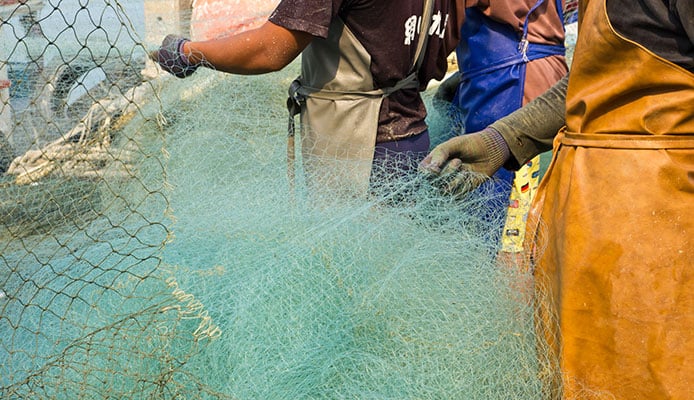
Q: What Are The Benefits Of Using Fishing Gloves?
The main benefit of fishing gloves is hand protection. A good pair of gloves not only protects your hands from physical injuries like cuts and punctures, but also works as a shield that prevents sunburns in the summer and keeps your hands warm in the winter.
Q: How To Properly Clean Fishing Gloves?
Just like regular gloves, most fishing gloves are safe for machine washing. However, we advise that you use a mild detergent and wash with cold water on a gentle cycle so you reduce the chance of damaging them. If your gloves can’t be washed in a machine, you will need to hand wash them. Of course, make sure you dry the gloves off completely before storing them.
Q: How To Take Out Smell From Fishing Gloves?
As we’ve pointed out, washing with a mild detergent is the best way to get the persistent smell out. Keep in mind, however, that not every model is safe for machine washing so we advise that you read the label first. If you need a quick solution, spraying the gloves with alcohol or hydrogen peroxide and rinsing them after a few minutes will get most of the smell out.
Q: How And When Should I Use Fishing Gloves?
If you have sensitive hands or you’re fishing in harsh conditions, we advise that you wear your gloves all the time. Otherwise, you can wear them only when cleaning and handling fish to protect your hands from scales and teeth.
Globo Surf Overview
Even though it’s not the first thing that comes to mind when talking about fishing gear, fishing gloves can make your experience more comfortable and save you from some nasty injuries. Choosing the best fishing gloves comes down to finding the right fit, insulation, and level of protection. We hope that our guide and reviews made your decision easier so you won’t have to worry about cuts and blisters any longer.
More Fishing Apparel Reviews:
- Fishing Pants
- Fishing Shorts
- Fishing Boots
- Waders For Women
- Hip Waders
- Boonie Hats
- Fishing Jackets
- Fishing Shirts
- Fly Fishing Waders



